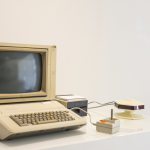Kiosk deployment is so important and in a lot of ways it’s a make or break time for the kiosks. There’s a lot in the successful opening of a kiosk and the period from site selection to opening day has a lot of intermittent decisions involved.
Short cuts may be tempting, but then again as they say a short cut is the longest distance between two points. So, in short you should avoid them and to help you to do so we’ve got a number of great tips.
1. Review Proposals
One of the most commonly found issues for companies who are purchasing kiosks, is that they don’t actually verify what they are getting. In a lot of cases cheaper looking proposals may omit the cost of the shipping and installation. Companies often tend to include extras too, such as site preparation costs, utility work and assistance costs. These all add up and make the greatest deal expensive – avoid such issues by reading in depth over proposals.
2. Appearance
The way a kiosk looks is so important on the first impressions it makes on people. People will decide whether or not they want to use a kiosk mainly from the way it looks from afar. If the kiosk looks appealing, attractive and easy to use then it will create confidence.
Kiosks should also be created to fit into their surroundings and taking the approach that any kiosk will most likely not fit with the aesthetics of the proposed area for the item.
3. Prototype
The prototype phase is important and though it does take longer and often means costing extra, it’s worth it. It will help limit the number of changes you need to make later and will ensure you have a fully working and operating kiosk from day one. Top tip is to send the kiosk to the manufacturer for set up, they’ll be able to diagnose any issues before it’s deployed on site – something that can be very beneficial.
4. Site Selection
Kiosks need to be positioned in a place where they are of the most use. Not all kiosks are ideal for all locations. Some people prefer an element of privacy when using a particular sort of kiosk. In other cases, you may need more than one kiosk. For instance a shopping centre on dozens of acres may need a number, while a hotel lobby may need one.
5. The Disability Discrimination Act also needs to be considered
In essence, you want to make kiosks as readily available as possible and this involves taking a number of things into account. This means that kiosks should be accessible by members of the general public. This means your kiosk may need accessible heights, allow for low level access or have aids for those with hearing impairment or the partially sighted.
In a lot of ways, a kiosk is only as functional as where it is deployed and the deployment of the items is all important in their success.
Rebecca Smith is a part of R&D at Cammax Limited. They are a leading bespoke provider of kiosk hardware and software solutions.












Leave a Reply